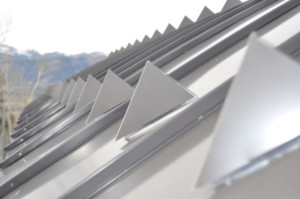Protecting Your Plants and Shrubs During The Winter
If you are anything like me, you just passed Christmas and said, “Whoa! Where did the time go?”
Judging by my last blog post (July…) you can see that time has flown past me. The other day I saw one of my friends lugging around some “A-Frame” plant protectors. I couldn’t help but ask him, “What are you doing?” He told me that he was protecting his plants from snow sliding off of his roof. Long story short, he is installing some Sno Shield snow guards to protect his plants and won’t be hauling those things in and out every winter and spring.
This got me to thinking that I need to share with the web some ideas about gardening. Gardening is something I really enjoy, but this time of year, not many people who live in cold climates are thinking about gardening considering the amount of white stuff covering the ground. If you are a true gardening enthusiast though, you are always thinking about what you can do to make your trees and shrubs look the best. Snow itself will typically not cause much damage to your plants and shrubs. In fact, snow can act as an insulator the same way mulch does and is one of the best protectors of plants during the winter. There are a few things you may want to consider when snow comes your way and you want to protect your plants and shrubs.
When heavy snow falls happen, branches that normally have some bend can and will break in the winter if they are frozen and get too much of a snow load. Sometimes it is best not to remove this snow as you may cause further damage by breaking more branches than the snow itself. If you are expecting a large snow storm, proclaim yourself a snow guard and periodically shake the snow off of the branches during the storm before snow loads build up and become too heavy.
Another way snow may damage your plants and shrubs is when snow slides off of your roof and lands on your plants below. This “avalanche” can crush your plants; you as well if you are not careful. The snow and ice that comes off of a roof is so heavy that it can actually kill someone if it falls on them. When plants are covered by deep, natural snow, (snow blown onto plants does not count as it can actually damage your plants as well) sometimes the plants will be cushioned from the falling snow and ice. However, when they aren’t, this is where Sno Shield comes in to the seen.
You really have two options to protect your plants from snow and ice falling from your roof. The first is to build an A-Frame over the plants. These “teepees” are basically a wooden shelter that keeps the snow from hitting the plant. The problem with teepees is that they are burdensome to put out every year, hard to store during the summer, and not very attractive as my friend puts it. The alternative to these teepees is to use snow guards. Snow guards are devices that attach to your roof and keep the snow from sliding off your home on to the plants.
One more thing to keep in mind when protecting your plants during the winter is to make sure that you do not use chemicals that can damage your soil and hurt the roots of your plants to remove snow and ice on your walkways. Avoid putting piles of snow with salt near your plants and your lawn. If you cannot avoid doing so, make sure to use a salt that does not hurt your plants.
Even though there isn’t much green to see outside when snow is around, remember that under all of that white stuff there is a lot of green just waiting to appear and the more you do now to protect it now, the better it will look this coming spring.



